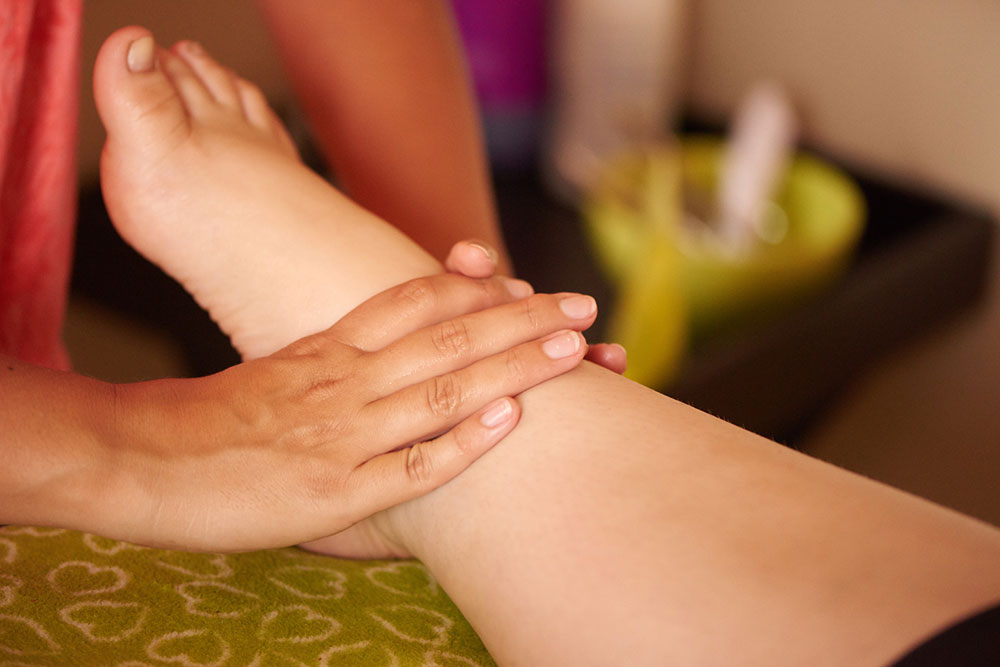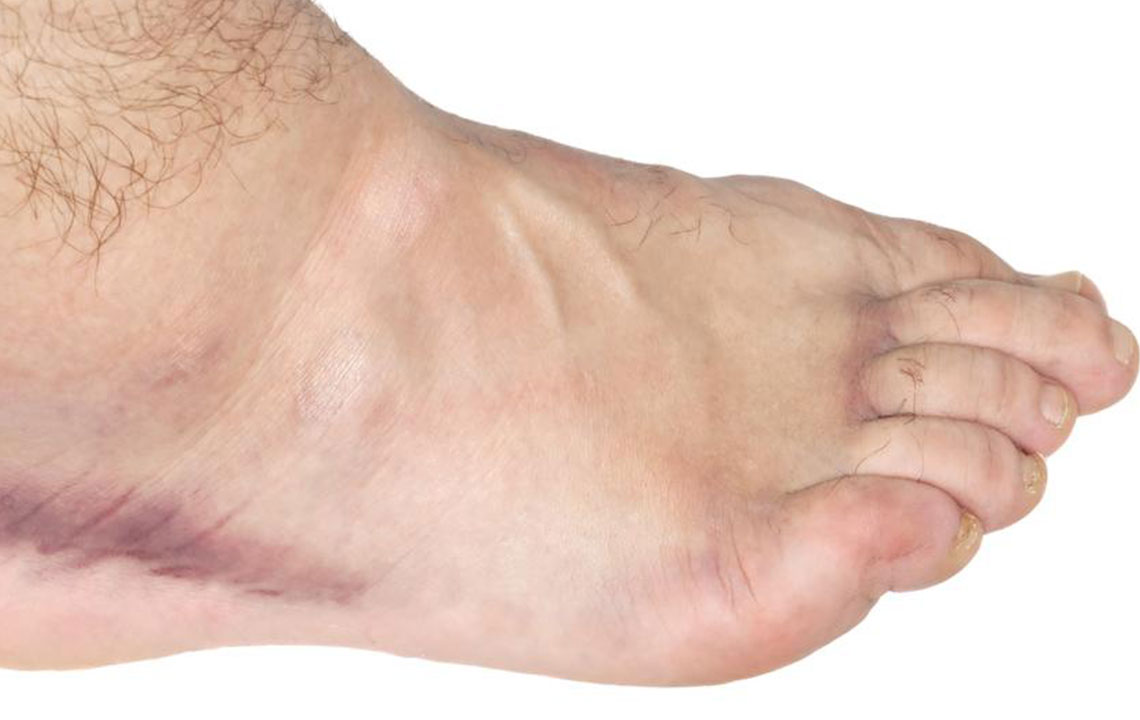Comprehensive Guide to Recognizing and Managing Swollen Ankles for Better Mobility
This comprehensive guide explains the causes, diagnosis, and management of swollen ankles. It covers lifestyle factors, medical conditions, when to seek medical help, and effective home remedies to reduce swelling and improve mobility, emphasizing the importance of timely intervention for better health outcomes.

Understanding and Managing Swollen Ankles for Improved Comfort
Experiencing swollen ankles can be both uncomfortable and concerning. Often accompanied by pain, redness, and a feeling of heaviness, ankle swelling (medically termed peripheral edema) can interfere with daily activities and impact overall quality of life. Whether caused by minor injuries, lifestyle factors, or underlying health conditions, understanding the causes and effective management strategies is vital. This comprehensive guide explores everything you need to know about swollen ankles, including symptoms, common causes, diagnosis, treatment options, and home remedies to alleviate discomfort and promote swift recovery.
In-depth insights into ankle swelling, its causes, and practical solutions to manage and prevent discomfort effectively.
Recognizing the Causes of Swollen Ankles
Injuries and Trauma: Sprains, fractures, or blunt trauma from accidents or sports activities can cause localized swelling, often accompanied by pain and bruising. Recognizing these signs early is crucial for appropriate treatment.
Prolonged Inactivity or Standing: Remaining stationary for long periods, whether sitting at a desk or standing without movement, can lead to fluid pooling in the lower limbs, resulting in swelling. This is particularly common during long flights or desk jobs.
Tight Clothing and Footwear: Wearing restrictive shoes, high heels, or tight socks can impede circulation, causing fluid retention in the ankles and feet.
Dietary Factors: Excess sodium intake contributes significantly to fluid retention, leading to swollen ankles. Maintaining a low-salt diet can help reduce this risk.
Insect Bites and Skin Reactions: Bites or skin irritation around the ankles can trigger localized swelling, often accompanied by itching and inflammation.
Burns and Heat Exposure: Contact with hot surfaces, sunburn, or heat-related injuries may cause swelling due to inflammatory responses.
In addition to lifestyle factors, several medical conditions can cause persistent ankle swelling, warranting thorough evaluation and treatment.
Underlying Medical Conditions Leading to Swollen Ankles
Obesity and Circulatory Issues: Excess weight can impair blood flow in the legs, leading to fluid accumulation and swelling.
Medication Side Effects: Certain drugs, such as corticosteroids, antidepressants, hormonal therapies, and blood pressure medications, may cause edema as a side effect.
Pregnancy and Hormonal Changes: Increased hormone levels during pregnancy can relax blood vessel walls, causing fluid buildup in the ankles and lower legs.
Cardiovascular Diseases: Heart failure can result in the inability of the heart to pump blood effectively, causing fluid retention and swelling in the extremities.
Venous Insufficiency and Blood Clots: Poor vein function or deep vein thrombosis can hinder proper blood flow, leading to edema.
Kidney and Liver Disorders: Conditions affecting kidney and liver function can disturb fluid regulation, resulting in swelling.
Infections and Gout: Cellulitis, bacterial skin infections, or gout can cause painful swelling around the ankles.
Monitoring and timely medical consultation are critical in managing persistent or worsening swelling, especially if accompanied by other symptoms.
When to Seek Professional Medical Assistance
If ankle swelling persists beyond a few days despite rest and home care, consult a healthcare provider.
Seek urgent care if swelling occurs suddenly, is accompanied by severe pain, redness, warmth, or signs of infection.
Persistent swelling during treatment for chronic conditions like heart, kidney, or liver disease warrants medical review.
If swelling is associated with shortness of breath, chest pain, or dizziness, immediate emergency care is necessary.
Diagnostic evaluations help identify the underlying cause of ankle swelling and guide targeted treatment plans.
Diagnostic Methods for Swollen Ankles
Physical Examination and Medical History: The doctor assesses swelling patterns, tenderness, skin changes, and recent injuries or symptoms.
Imaging Tests: X-rays reveal fractures or skeletal anomalies, while ultrasounds detect blood clots and assess blood flow.
Advanced Imaging: MRI and CT scans provide detailed views of tissue, joints, and blood vessels, aiding in diagnosing complex conditions.
Blood Tests: Tests evaluate kidney, liver, and heart functions, and check for signs of infection or systemic issues.
Cardiac Evaluation: An ECG or echocardiogram assesses heart health in patients with suspected cardiovascular causes.
Effective treatment depends on the underlying cause identified through these diagnostic assessments.
Treatment Options for Swollen Ankles
Injury Management: Rest, immobilization, elevation, and analgesics are primary treatments for sprains or fractures. Severe cases may require surgical intervention.
Medications: Diuretics can help reduce fluid buildup in certain conditions, alongside anti-inflammatory drugs or antibiotics if infection is present.
Addressing Underlying Conditions: Managing heart failure, kidney disease, or vascular issues with appropriate medications and lifestyle changes is essential for long-term control.
Devices and Surgical Procedures: Compression stockings improve circulation, while surgical options may include vein repair or removal of blockages.
Home remedies and lifestyle modifications can significantly assist in alleviating ankle swelling and preventing recurrence.
Home Remedies and Preventative Measures
Rest and Elevation: Rest your legs and elevate your feet above heart level whenever possible to promote fluid drainage.
Cold Therapy: Applying ice packs reduces inflammation and eases pain, especially after injuries or strenuous activity.
Physical Activity: Gentle walking and leg exercises enhance circulation, reducing fluid build-up.
Dietary Adjustments: Limiting salt intake to less than 2,300 mg daily prevents unnecessary fluid retention. Hydrate appropriately to help flush out excess fluids.
Compression Therapy: Wearing compression stockings aids venous return and minimizes swelling during activity or long periods of standing.
Regular Medical Checkups: Routine health screenings ensure early detection and management of underlying health issues contributing to edema.
Understanding the underlying causes of swollen ankles and adopting a combination of medical treatment, lifestyle changes, and home remedies can greatly improve mobility, reduce discomfort, and enhance overall health. If symptoms persist or worsen, seeking professional medical evaluation remains essential for effective management and preventing potential complications.





